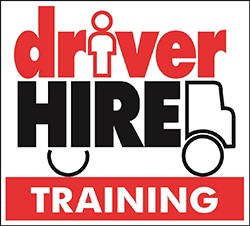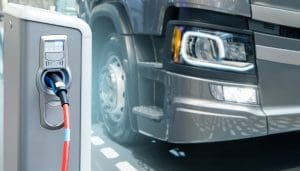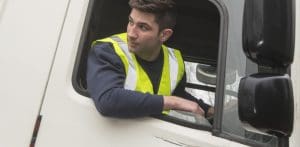HGVs often have a limit on the amount that is safe to load them with. Long, heavy or wide loads will typically be transported under the abnormal indivisible loads provisions of the Motor Vehicle (Authorisation of Special Types) General Order 2003 (STGO).
At Driver Hire, our drivers pride themselves on their competence in transporting anything and everything. Therefore, it comes as no surprise that many drivers have seen or transported various unusual HGV cargo in their time, whether it’s themselves or someone else. In this article, we will take you through some of the strangest loads that HGV drivers have had or seen, as well as offer practical information about transporting them and load security.
Abnormal Loads
According to the UK government website, an abnormal load is a vehicle that has any of the following:
- Weight of more than 44,000kg
- Axle load of more than 10,000kg for a single non-driving axle and 11,500kg for a single driving axle
- Width of more than 2.9m
- Rigid length of more than 18.65m
It’s important to note that if you’re transporting freight out of the country, other measurements may apply and there will be extra requirements for this to be permitted.
If you’re planning to transport freight considered abnormal, depending on the cargo being moved and your planned route, you may be required to give a warning in advance to:
- Police
- Highway authorities
- Bridge and structure owners such as Network Rail
Highways England have an Electronic Service Delivery for Abnormal Loads (ESDAL) system in place which allows you to:
- Plan your route
- Inform the police, highways and bridge authorities of your abnormal load transportation around the road network
- Receive warning ahead of your journey of any potential route complications
- Save vehicle details and routes for future use
If you prefer to do things manually, you must fill out an abnormal loads movement request form.
Generally, only one abnormal load can be authorised to be transported at any one time. However, you could move two or more abnormal loads within one HGV, providing the cargos are from the same location, being delivered to the same location and are of the same character.
Make sure to give yourself plenty of time in advance to get the required permissions from the police, highway and bridge authorities. You can read more here about the notice requirements for transporting abnormal loads.
Weight
The maximum allowed weight of a vehicle transporting abnormal loads is 150 tonnes.
Width
Normally, vehicles moving abnormal loads are permitted to be up to 2.9m. However, if needed to ensure the safe transportation of large loads, they may be up to 6.1m wide. The following also applies:
- Anything over 2.9m will require notice to be given two days in advance, to each police force through which the vehicle passes through.
- Anything over 3.5m in width will need an attendant in addition to the two days of notice.
- Anything over 5m in width will require a Special Order from the Highways Agency. This is as well as the two-day notice period and attendant.
Length
Vehicles transporting abnormal loads must not usually exceed 30m. However, where a load is transported via a combination of vehicle and trailers, or on a long-articulated vehicle, the dimension of 30m is measured excluding the drawing vehicle.
Speed Limits
Depending on the category the vehicle falls into and the type of road, there will be speed limits, and these are as follows:
| Vehicle Category | Motorway | Dual Carriageway | Other Roads |
| 1 | 60mph | 50mph | 40mph |
| 2 or 3 | 40mph | 35mph | 30mph |
Load Securing
It’s important to ensure cargo is held securely in order to avoid road impact incidents and financial burdens on the UK economy.
The load securing systems utilised should be suitable for the loads being carried and the vehicles being used.
These may include:
- ‘Over-the-top’ lashings
- Rear kites
- Intermediate bulk heads
- Direct lashing to specific anchor points
The individual in charge of loading a vehicle must consider other vital aspects such as axle weights and vehicle stability. These are the standard conditions that need to be met to ensure vehicles are safe before beginning a journey.
Before securing a load, make sure you do the following:
- Ensure the vehicle is fit for purpose – there are expert businesses who can give guidance on the right load securing system for your operation and loads you transport.
- Load the vehicle properly – stack the load against the headboard with the centre of gravity as low as possible. You must ensure it’s stable without lashings to decrease the danger of it falling over during unloading.
- Pick the correct loading method – whatever approach you select, the load restraint system needs to secure the load to the vehicle chassis and stop movement.
- Use adequate load restraint – incidents take place when drivers and operators underestimate how much restraint is required to keep a load on the vehicle.
- Communication is key – drivers must be given clear information on the loads they carry, how to unload and what they should do if the load shifts.
- Load restraint system – the combined strength of the load restraint system should be sufficient enough to withstand a forward force no less than the total weight of the load (to prevent the load from moving under severe braking) and half the weight of the load moving backwards and sideways.
When it comes to the most unusual HGV loads to be transported, the following came out on top:
1. Oil Rig Parts
Oil rigs are some of the largest and most complex achievements of engineering humans have ever made. Naturally, moving them also necessitates transportation that is just as large and complicated. Extraordinarily, some of the world’s biggest and heaviest oil rig components are often transported on wheels. This requires huge loading operations, the largest cranes and big teams of professional drivers.
2. Train Carriage
Train delays are somewhat of a common issue that we are all used to. However, last year, motorists at Crystal Palace found themselves facing a similar issue when a lorry transporting an entire train carriage got stuck at a junction. When it comes to big loads as such, it’s recommended to carry out a road test with an empty rig, to ensure that you’re not going to run into any problems anywhere along your route.
3. Wind Turbines
Most individuals don’t tend to think about how wind turbines get to their final destinations in fields and seas, until they witness one being transported on a massive flatbed. The key to transporting these large and extremely long pieces of machinery is to break them down into fragments and transport each individually. However, this isn’t to say it’ll be an easy feat, with 100-foot HGVs necessary just to move one single blade.
4. £1 Million in Cash
In 2015, a HGV carrying a million pounds in cash came to be in an accident in Swindon where coins ended up being scattered across the road. The lorry was reported to have shunted at a roundabout where it spilt its freight in the process.
5. Glue
In 2018, a lorry transporting 23 tonnes of industrial glue used for making MDF (medium-density fibreboard) spilled its load on junction 44 of the M6 near Carlisle. The road had to be cleaned up by the fire service and Highways England overnight. However, it also had to remain closed for a few days as it required resurfacing.
6. Cider Vats
In 2009, an extensive operation was carried out to transport two giant cider vats to the Bulmer’s factory. The vats required their own special route planned in order to avoid road bridges. Plus, specialist teams had to be tasked with getting rid of tree branches and disconnecting power cables blocking the roads. The HGV was only able to travel at 10mph – nonetheless this was a slow but notable journey.
If you’d like to talk to us about how we can help your professional driving career, call us on 0808 178 9977 or chat to one of our agents right now.












